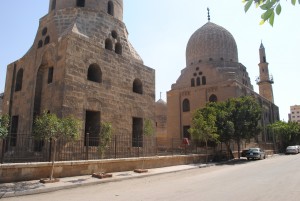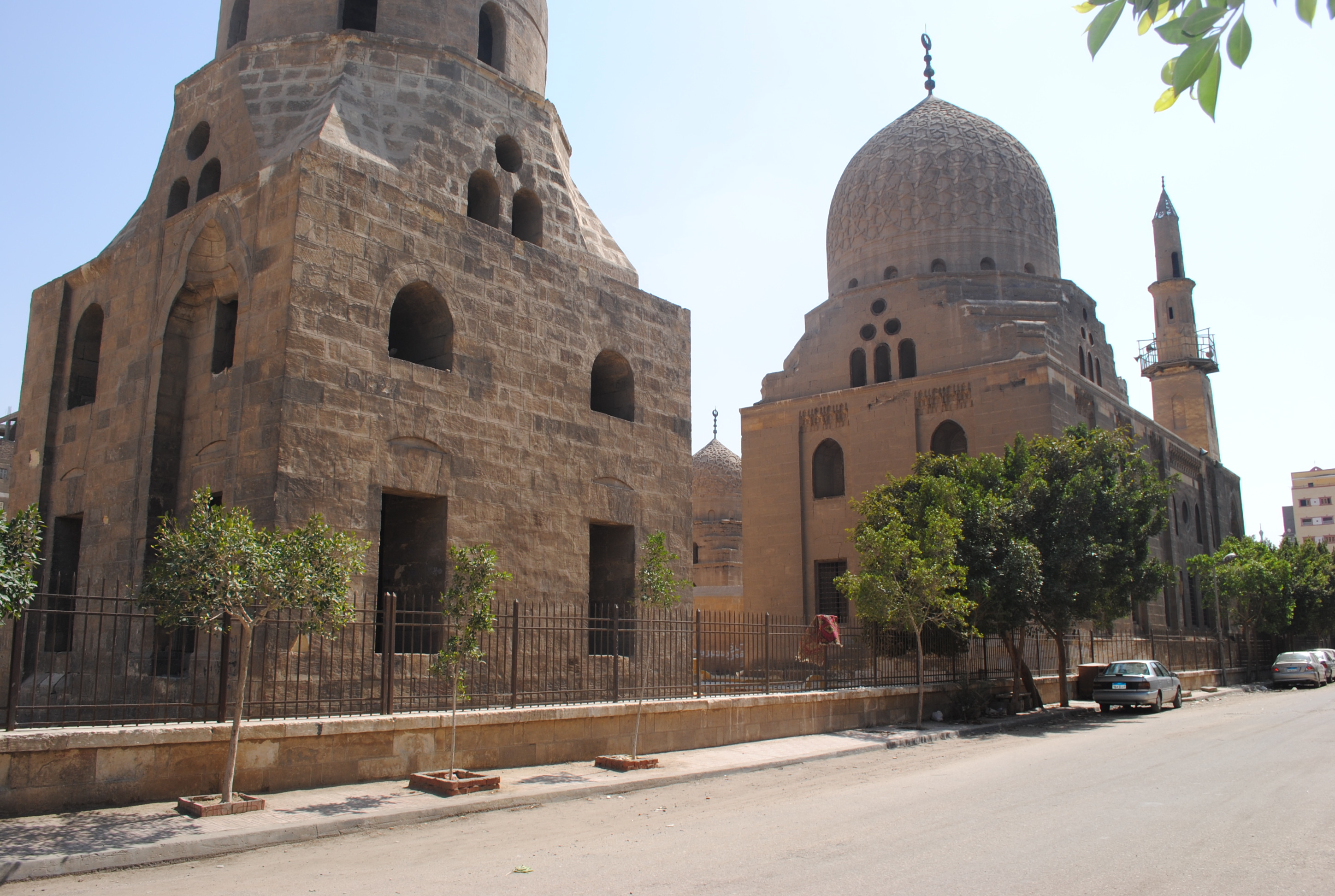
Abdel-Rahman Sherief
One of the most extraordinary areas of Cairo is the city of the dead, as a testament to the interest of people in the afterlife while their worldly lives continue.
Travellers and chroniclers, like the famous Moroccan Ibn-Batuta who visited Cairo in the fourteenth century, were impressed by the Al-Qarafa or Al-Gabana district. They were fascinated by the strikingly ornamented domes and mosques, its well-organised districts and gardens, and amazed by the fact that this pleasant neighbourhood was established entirely for deceased residents. According to Egyptian historians the Al-Maqrizi, the Al-Qarafa is named after a Yemeni tribe called Qorafa which dwelt in the area.
Al-Qarafa extends from the Moqattam hill in East Cairo to Al-Azhar Street in the heart of Fatimid Cairo; the place was historically known as the city of domes due to the high number of domes and mosques. Since the Mamluk era kings and princes built mosques and domes as their final resting places in this area of the city, although the habit of building a specific building for burial began much earlier in Egypt with the pyramids. The practice did not disappear with the pharaohs, but continued into the Islamic era.
The first man to develop this area of the city was a Mamluk Sultan called Beibers. Sultan Beibers established in Al-Qarafa, which then was outside Cairo’s boundary walls and gates, a racetrack which staged horse races and competitions between knights and princes. Beibers also exploited the area as a training ground for the soldiers in his army.
The first to build a tomb for himself in Al-Qarafa was Sultan Al-Zaher Barkouk and the remains of the dome can still be seen. Sultan Farag, the son of Al-Zaher imitated his father and built a tomb and a Khanqa that carries his own name. Khanqa is a Persian word, which was the language of the Mamluks and the Egyptian elite at the time; it means a large mosque which includes a school for teaching Islamic jurisprudence and rooms for foreign students and teachers.
Many sultans and princes followed Sultan Farag’s lead and built mosques and domes in the area as shrines, like Sultan Enal, Sultan Al-Ashraf Bersbay and Sultan Qaytbay. Most of them, however, were not buried in their mosques for many reasons; some died in battles outside Egypt and many others were killed by conspirators and their bodies were thrown in the Nile.
The miraculous structure and adornment of these mosques means the City of the Dead is a perfect historical tourism site. “Many tourists come to visit Al-Qarafa and the number of tourists increased after the revolution, despite the volatile security situation,” said Abdullah Saad, archaeologist and manager of the monument area.
Al-Qarafa is divided into two areas, West Al-Qarafa, teeming with Mamluk mosques and tombs, and East Al-Qarafa, at the foot of the hill of Moqattam. “The eastern area was used as a graveyard even before the domination of Islam in Egypt,” Saad said. “Egyptians believed that they were blessed by burying their dead at Moqattam because they thought it was a part of heaven.”
It is said that after the Muslim conquest of Egypt, the old Egyptian rulers offered a huge bid to purchase the Moqattam Mountain from the Muslim rulers due to the honour and revere Copts and Egyptians hold for this location. Many Sufi sheikhs and imams were also buried in East Al-Qarafa, including Ibn Al-Fared and Al-Shafei.
In the recent past a project was submitted to the former minister of monuments and antiquities Zahi Hawas to restore and renovate the complete Al-Qarafa area and turn it into a closed tourist area, but the project was rejected.
“The government must do something in favour of this historic area, all renovation projects were stopped and the view of the monuments is disappearing between the highrising housing blocks that encroach on the area. It would be a big mistake to neglect such a rich area as Al-Qarafa,” Saad said.




